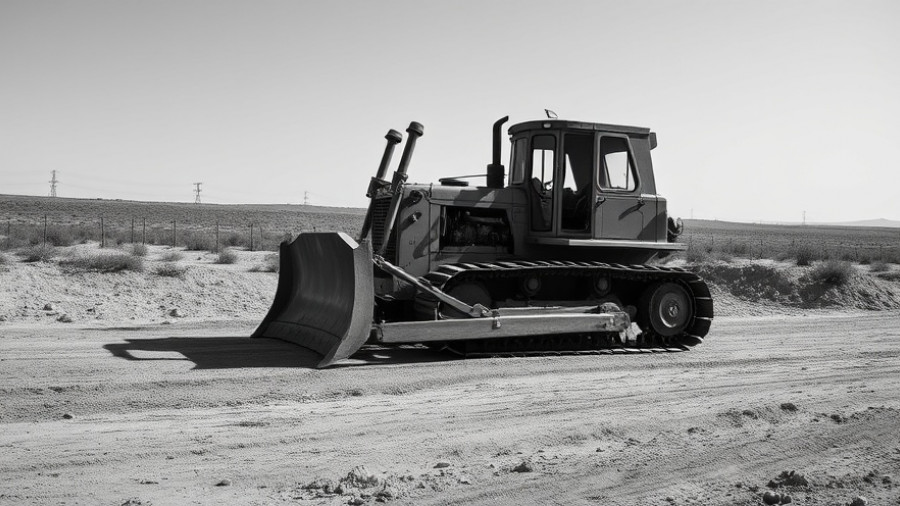
Understanding the Evolution of Crawler Dozers
Crawler dozers have an illustrious history, serving pivotal roles in both military and civil engineering applications. From their introduction in the 1880s to their renown during World War II, these machines have evolved significantly. U.S. Navy Admiral William F. Halsey famously ranked bulldozers among the top instruments that helped secure victories, showcasing their vital role not just in combat but in building the post-war economy. As we approach 2025, the legacy of crawler dozers remains strong, transforming in both form and function.
The Technological Transformation: What’s New in 2025
As of 2025, the dozer market is experiencing remarkable growth driven by technological advancements. Innovation is key, with features like GPS integration and automated functionalities becoming commonplace. For example, leading manufacturers like Caterpillar and Komatsu are unveiling advanced telematics systems that enhance machinery operation through remote monitoring and diagnostic capabilities. This digitization not only improves efficiency but also ensures minimal downtime, supporting contractors in completing projects within budget and on schedule.
Market Dynamics: The Surge of Crawler Dozer Sales
In the last year, sales of crawler dozers have increased by 3%, reflecting a larger industry trend associated with rising global investment in infrastructure. This boom is particularly fueled by various infrastructures initiatives worldwide, including the Infrastructure Investment and Jobs Act in the U.S., which promises $1.2 trillion in funding for transportation and infrastructure upgrades. Such policies are compelling contractors to procure crawlers as they gear up for significant development projects.
Emerging Trends: The Shift Towards Sustainability
An interesting trend in the dozer market is the shift towards more sustainable options. As the construction industry faces increasing scrutiny regarding environmental impacts, manufacturers are responding by integrating electric and hybrid options into their fleets. This green shift supports not only compliance with regulatory pressures but also addresses market demand for cleaner machinery. Electric models are proving especially beneficial in urban environments where noise and emissions are critical considerations.
Spotlight on the Leading Manufacturers
The dozer landscape is dominated by key players like Caterpillar, Komatsu, Case, and John Deere, each contributing unique innovations. For instance, Case’s 850M model is notable for its exceptional drawbar pull and blade controls, making it a popular choice among operators. Likewise, Komatsu’s recent teleoperation technology allows for greater versatility and safety, particularly in hazardous job sites. These advancements highlight each company’s commitment to improving operational efficiency and machine reliability.
Future Development: What Lies Ahead for Crawler Dozers?
Looking ahead, the crawler dozer market is projected to reach approximately USD 9.96 billion by 2033, growing at a compound annual growth rate of 6.3%. This growth is largely attributed to ongoing infrastructure projects and the expanding mining sector. Regions like Asia-Pacific, Africa, and Latin America are witnessing robust demand driven by both construction and mining activities. The integration of smart technologies and green initiatives will continue to shape the evolutionary path of these machines.
Decisions You Can Make With This Information
With these insights, contractors and construction professionals should consider how emerging technologies in crawler dozers can enhance their operations. Investing in newer models with sophisticated features could lead to significant efficiencies on-site. Moreover, keeping abreast of sustainability trends will help in making informed purchasing decisions that comply with modern regulatory demands and community expectations.
 Add Row
Add Row  Add
Add 




Write A Comment